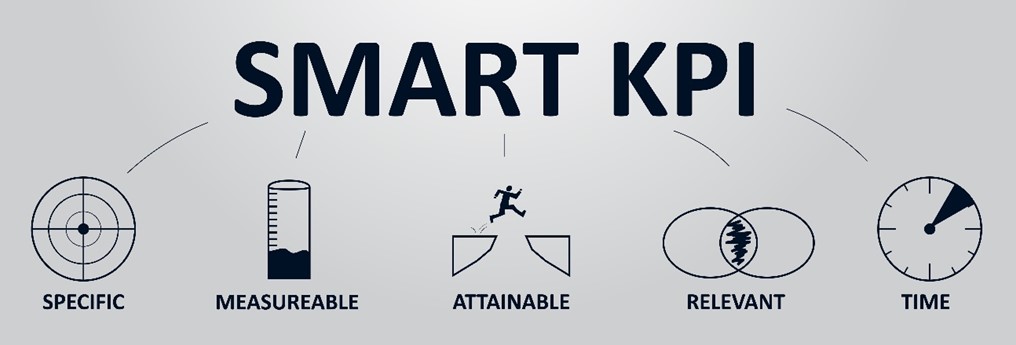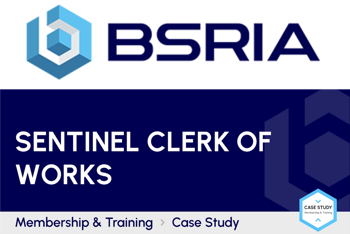Smart KPIs
Contents |
[edit] Introduction
For a company, growth and improvement could have multiple subtexts - an increase in revenue, improved sales, company growth, etc. All these factors should align positively with the successful development and progression of an enterprise.
Thus, with multiple parameters involved, it can become a tricky prospect for employees to be in cognizance of the business improvement strategy of their company if their tasks and goals are not associated with the same. This is where Key Performance Indicators (KPI) come into place. KPIs are quantifiable measures of performance for a particular objective over a specific time.
[edit] What are smart KPIs?
KPIs can be simple or elaborate, based on an organisation's vision for its progression and the inclusion of people, processes, and programmes as useable metrics. Progressive and forward-thinking organisations set 'SMART’ KPIs to ensure optimum metrics are used in supporting the organisation. SMART KPIs should be Specific, Measurable, Attainable, Relevant and Attainable to be effective for the organisation. The performance measurement with these indicators is periodically assessed, discussed, and modified to guide the organisation towards its goals.
So, how can employees as well as organisations benefit from SMART KPIs? Well, we have mentioned in the title that they improve business performance, but that does not give you the full picture.
[edit] Performance tracking through KPIs
Imagine going on a road trip without any signs on the road - it would be far more difficult if not impossible to complete your journey. KPI's are like the road signs, they indicate and enable you to track your performance to assess whether you are moving in the right direction. So, for example, your goal for the quarter is enhanced customer satisfaction, a KPI in that domain will give you quantifiable measure in terms of customer satisfaction index/score. This way, the employees as well as the organisation can be on the same page with complete visibility. This can translate into better performance management.
[edit] Bridging the learning gap
If a certain KPI output is not met over a period, it can be an indicator that the team requires further skill up gradation. This can then be achieved by providing the right training to the employees. Similarly, employees can identify learning gaps in their profile by assessing the KPI's and approach the learning department to seek appropriate training and skills. In this way, a KPI model can be created wherein a KPI is grouped with related event/ activity and a process flow established to add crucial information pertaining the requirements.
[edit] Better decision making
In this digital era, you can get curated dashboards and KPI scorecards on your screens to help you get all the performance related metrics right in front of you. When the stats are available for everyone to see, people management and self-management gets more effective. Such transparency also enables executives to identify factors that are contributing to the growth of the company and the ones that are not. Such data forms the basis of sound decisions. By generating actionable insights from the KPI's, a plan may be established for each department, every team and all the employees to work collectively towards business improvement.
[edit] Informed employees
The workplace today is dynamic. A bottom-down approach is not only conservative, but it also leaves employees feeling left out. SMART KPI's address this issue by making employees aware of their individual progress and its relation to the overall organisation performance. Thus, with any KPI, an employee is gaining crucial knowledge about company goals. This makes them feel empowered and they can proactively participate in achieving the organisation goals.
[edit] Better team management
Often team leaders and managers struggle to help their team members achieve their goals because they lack any proper measurement of performance. With KPI's, your team’s performance for a particular period (quarter, half year, annual) is right in front of you and you can identify areas for further improvement. Thus, managers can make better calls for their team in terms of individual growth and skill up gradation. By continuously recording KPIs, at the end of the year, managers can get a bird’s eye view of their team’s strengths and weaknesses and they can create the upcoming year’s plan accordingly.
In summary, no matter what the size of your organisation or what goals you are targeting, setting SMART KPIs can put you on the path of performance improvement. Maintaining KPIs may take some practice and consistent discipline, but the payoffs are worth the efforts. Once you start tracking the progress and respond to the areas of improvement in a proactive manner, the SMART KPIs will begin to become a permanent tool for organisational improvement.
[edit] Related articles on Designing Buildings
- Best value.
- Building performance.
- Facility condition index FCI.
- Health performance indicators in the built environment.
- How progress is agreed in construction.
- Identifying the causes of trends in construction labour productivity.
- Key performance indicators KPI
- Mechanical and electrical maintenance customer satisfaction KPI's 2017.
- Milestones.
- Performance.
- Performance requirements.
- Progress of construction works.
- Schedule performance index (SPI).
- Strategic performance targets.
- Sustainability in facility management
Featured articles and news
Construction Skills Mission Board launch sector drive
Newly formed government and industry collaboration set strategy for recruiting an additional 100,000 construction workers a year.
New Architects Code comes into effect in September 2025
ARB Architects Code of Conduct and Practice available with ongoing consultation regarding guidance.
Welsh Skills Body (Medr) launches ambitious plan
The new skills body brings together funding and regulation of tertiary education and research for the devolved nation.
Paul Gandy FCIOB announced as next CIOB President
Former Tilbury Douglas CEO takes helm.
UK Infrastructure: A 10 Year Strategy. In brief with reactions
With the National Infrastructure and Service Transformation Authority (NISTA).
Ebenezer Howard: inventor of the garden city. Book review.
The Grenfell Tower fire, eight years on
A time to pause and reflect as Dubai tower block fire reported just before anniversary.
Airtightness Topic Guide BSRIA TG 27/2025
Explaining the basics of airtightness, what it is, why it's important, when it's required and how it's carried out.
Construction contract awards hit lowest point of 2025
Plummeting for second consecutive month, intensifying concerns for housing and infrastructure goals.
Understanding Mental Health in the Built Environment 2025
Examining the state of mental health in construction, shedding light on levels of stress, anxiety and depression.
The benefits of engaging with insulation manufacturers
When considering ground floor constructions.
Lighting Industry endorses Blueprint for Electrification
The Lighting Industry Association fully supports the ECA Blueprint as a timely, urgent call to action.
BSRIA Sentinel Clerk of Works Training Case Study
Strengthening expertise to enhance service delivery with integrated cutting-edge industry knowledge.
Impact report from the Supply Chain Sustainability School
Free sustainability skills, training and support delivered to thousands of UK companies to help cut carbon.
The Building Safety Forum at the Installershow 2025
With speakers confirmed for 24 June as part of Building Safety Week.
The UK’s largest air pollution campaign.
Future Homes Standard, now includes solar, but what else?
Will the new standard, due to in the Autumn, go far enough in terms of performance ?
BSRIA Briefing: Cleaner Air, Better tomorrow
A look back at issues relating to inside and outside air quality, discussed during the BSRIA briefing in 2023.
Restoring Abbotsford's hothouse
Bringing the writer Walter Scott's garden to life.
Reflections on the spending review with CIAT.



























